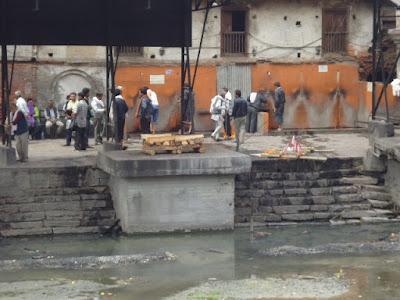The training team arrived on April 6th. We welcomed them with silk scarves which is a Nepali custom.
The first session was held at the National Health Training Center in Kathmandu. There were 43 students from over 20 hospitals and health units. There were eleven training tables and most of the trainers were Nepali. The Americans trained 3 tables.
This is Dr. George Groberg, a pediatrician from Idaho Falls, Idaho. The team was led by Dr. Rob Clark from Salem, Utah. Rob is seen in the background.
This is Bonnie Groberg, a nurse, training a Nepali student.
This is Dan Woodhead, a respiratory therapist with an extensive background in Neonatal Intensive Care. He would spend 10 days working and training the staff in the NICU at a local hospital. That is in another blog post.
This is Dr. Clark, Scott and the Director of the NHTC presenting certificates of completion.
Each participating institution was presented equipment to do training at their location. Scott, Lear and Dr. Clark are shown presenting equipment to a hospital representative.
One of the doctors at the training was from Sindhupalchowk. We had been to that district in January delivering emergency food and blankets. This doctor told us that her hospital had been destroyed during the earthquake and they were working out of tents and a temporary metal shed. She and three other physicians share a single room for their living quarters. She is from Kathmandu and was glad to be back with family, friends and a hot shower, at least for a few days.
After the two-day training in Kathmandu we flew to Biratnagar in far eastern Nepal. This is a picture of the baggage handling system in the Biratnagar airport.
The next training session was held in Dharan at a health institute. Again we had over 40 students. Most of the trainers came with us from Kathmandu.
The training involved some role playing. Yes, the male Nepali doctor is pretending to be a woman in labor. He asked for more drugs to help with the pain and got a big laugh from everybody.
Dr. Groberg, Dr. Clark and the vice chancellor of the institute present certificates.
This group of students wanted a picture with Bonnie Groberg and Dr. Clark.





















